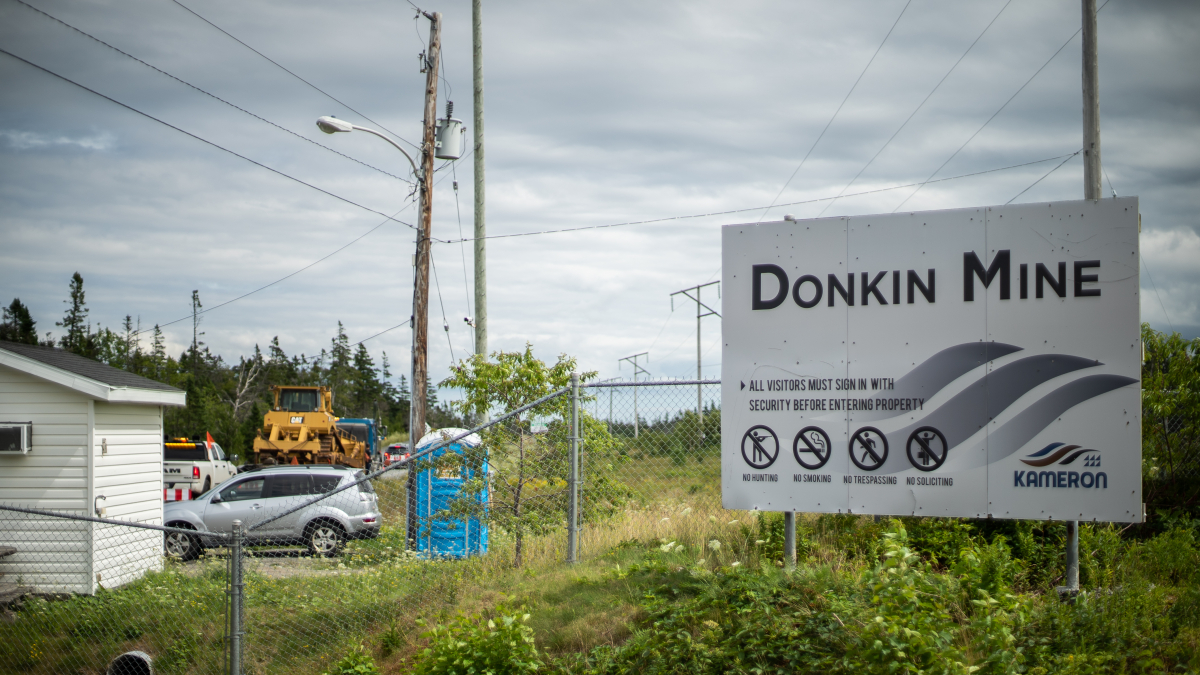Support strong Canadian climate journalism for 2025
The origin of last month’s underground fire at an Eastern Canadian coal mine shows the need for more preventive maintenance, said Gary Taje, a retired underground miner and longtime international staff representative at United Mine Workers of America.
On Wednesday, the Nova Scotia Department of Labour said the fire at Cape Breton’s Donkin Mine was caused by an overheated ball bearing that ignited the conveyor belt that moves coal out of the mine. The mine was closed following the fire and resumed production less than two weeks after.
“The conveyor belt itself is required to be fire-resistant … and this requirement likely prevented a more serious event,” Gary O’Toole, senior executive director for the province’s safety branch, said at a Zoom meeting with reporters.

The fire was reported in the evening of April 30 at around 5 p.m., hours after anyone would typically be working in the mine, as there are no miners underground on Sundays. O’Toole confirmed the conveyor was not in operation at the time of the fire and that “there would not have been a shift on Sunday.”
“When the conveyor stopped at the end of the shift, that ball bearing had [the] opportunity to come in contact for an extended period with material that wasn't moving,” said O’Toole.
“And that's essentially what caused this fire. It was more of a smouldering fire than it was a full-on, open-flame fire.”
The company, Kameron Coal, did not respond to Canada’s National Observer by deadline.
Taje said it adds up that the fire would have been gradual because of the material of the conveyor belt, but it raises questions about why the ball bearing was able to get so hot and why no one detected it earlier.
Depending on the type of bearing, maintenance, such as greasing, needs to be performed to prevent them from overheating, and equipment must be frequently inspected, explained Taje.
“They're not looking after the little things — the company is still being negligent in its responsibilities in preventing an ignition,” he said
“This doesn't absolve the company by saying that there was a hot bearing. Why was the bearing hot? Why did no one see this bearing? What kind of maintenance schedule is there?”
The mine reopened last September after closing in 2020 when more than a dozen roof cave-ins prompted a series of on-and-off stop-work orders from the province. Between September 2022 and April 2023, the mine received 23 warnings, 28 compliance orders and 11 administrative penalties, all violations of the province’s Occupational Health and Safety Act.
The mine is not unionized, although the United Mine Workers of America made attempts to organize workers before it shut down in 2020.
During Wednesday’s press conference, O’Toole said no compliance orders or penalties will be imposed in relation to the fire, and said no previous infractions were related to the cause of the fire. He said smoke set off the sprinkler system, but that emergency crews extinguished the fire. Moving forward, he committed to more unplanned inspections and more scrutiny of the conveyor system.
Looking at photographs of smoke coming from the mine, Taje says the fire “was significant, and it shouldn't be trivialized or minimized.”






Comments
"“The conveyor belt itself is required to be fire-resistant … and this requirement likely prevented a more serious event,” Gary O’Toole, senior executive director for the province’s safety branch, said at a Zoom meeting with reporters."
No, no, that can't be!!! Pierre Poilievre tells us that all regulation is just there to hold back free enterprise, evil red tape created by malevolent bureaucrats because they hate success! Nobody would ever create a safety rule because it made people safe!